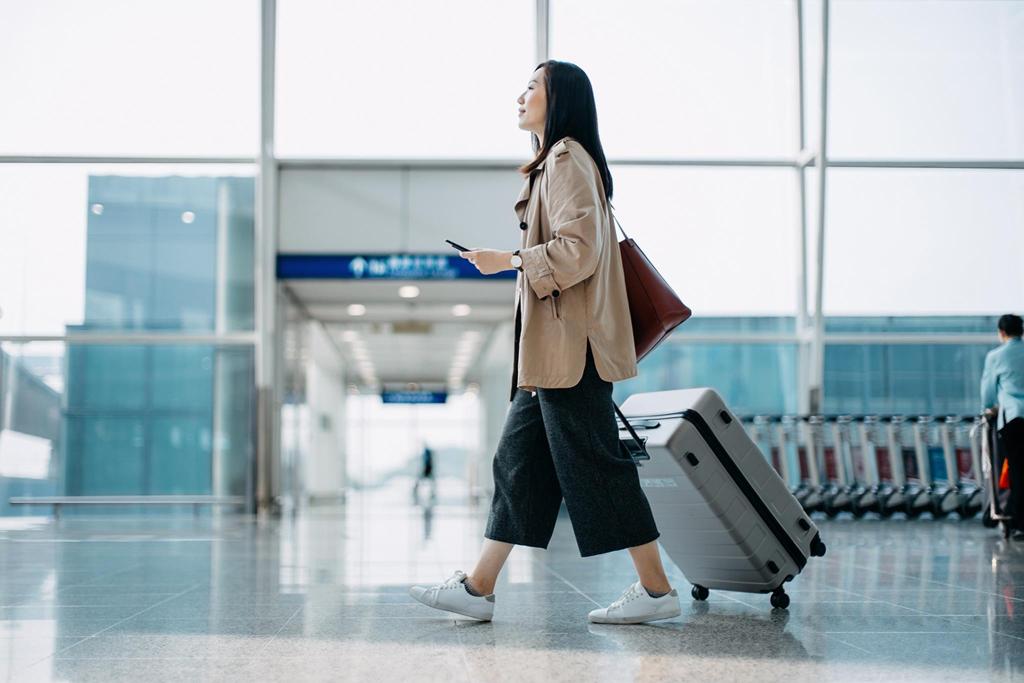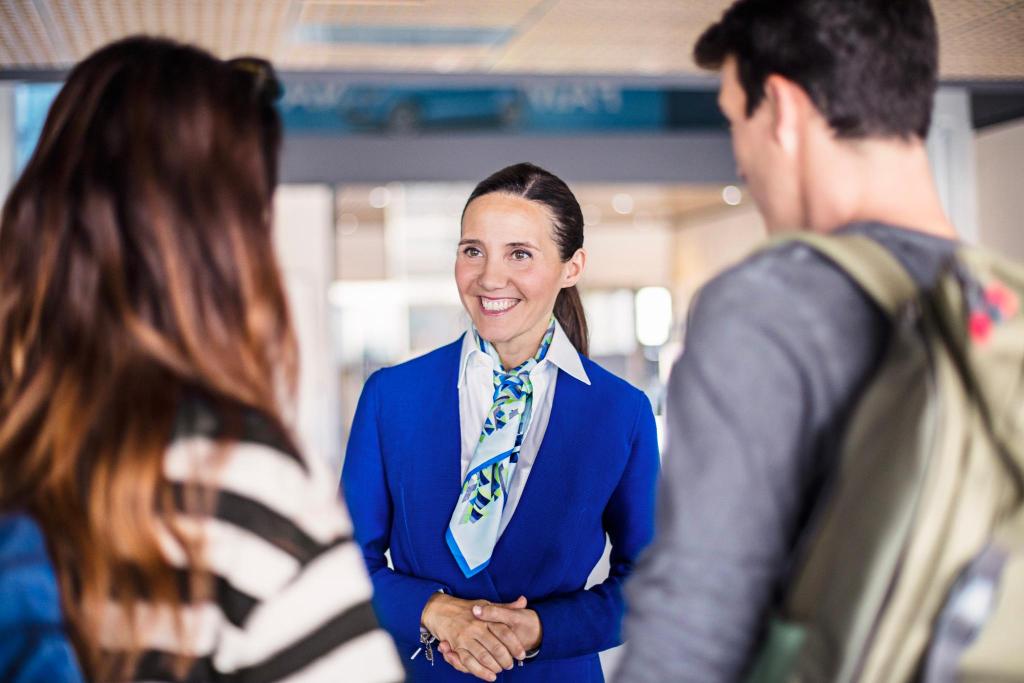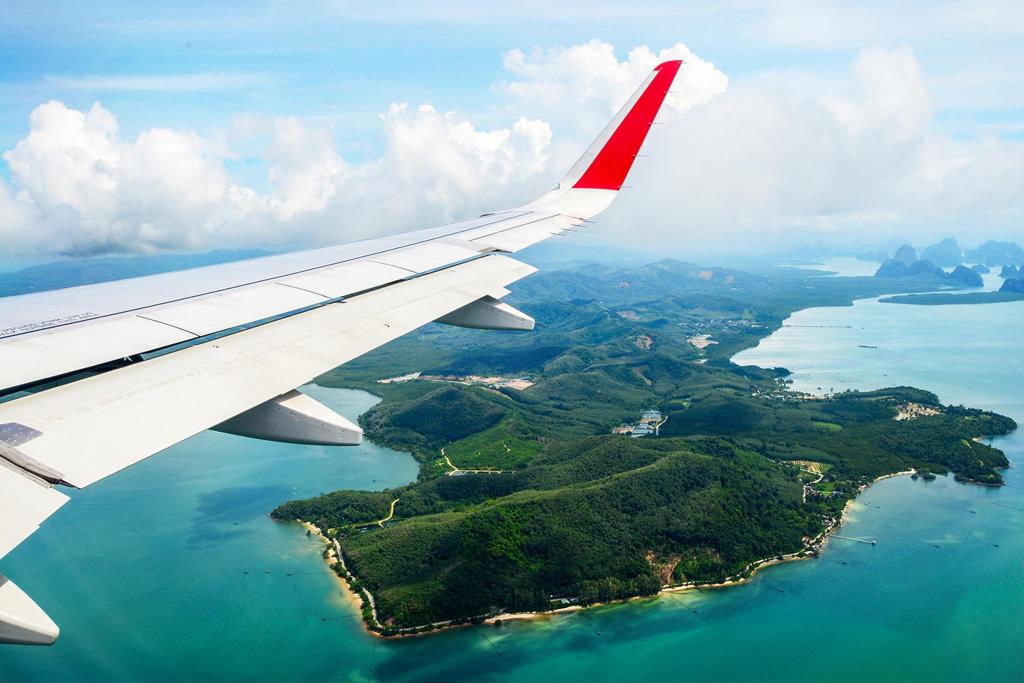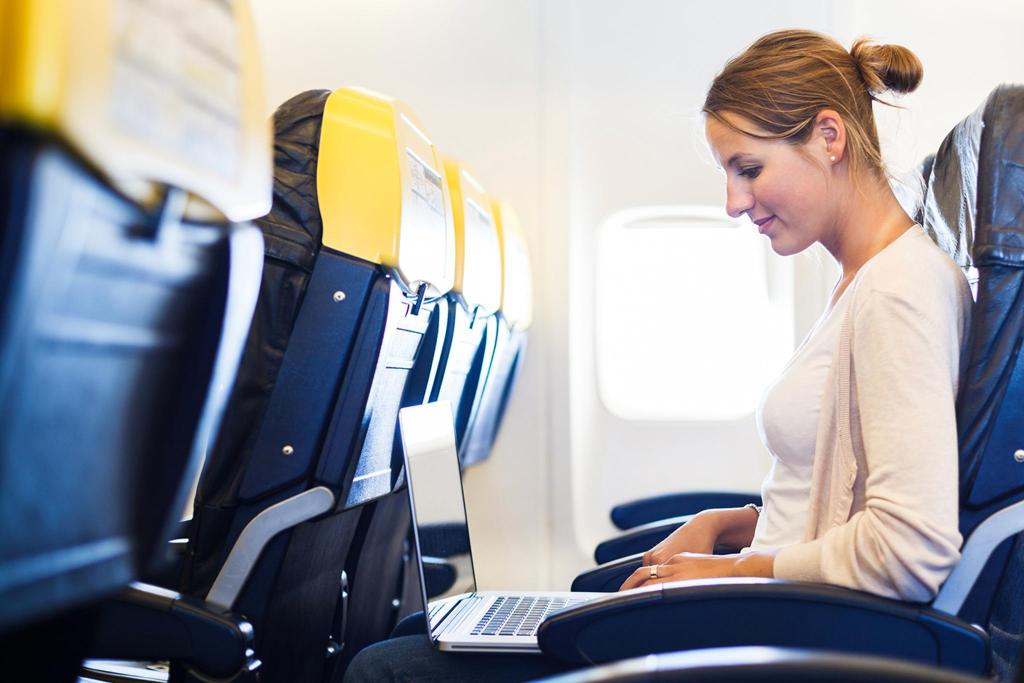
What are the Best US Airports for Flight Connections
While direct flights are always nice, sometimes you can’t help but schedule a flight with a connection. Some airports are more convenient for connecting flights than others:
- Find out our tops picks for airport flight connections
- Layover FAQs
Booking a direct flight from your origin to your destination is fairly straightforward, but sometimes you won’t be able to avoid booking a connecting flight that makes a stop in an airport in between. When booking a connecting flight, you’ll want to understand the airport that you’ll be having your layover in – some airports tend to facilitate close connections better than others.
What is a connecting flight?

A connecting flight is a journey where you have to change planes at least once to reach your final destination. Instead of taking a direct flight, you take one flight to an intermediate airport—a "layover" location—and then board another plane to continue to your destination.
How do connecting flights work?
Connecting flights break a journey into multiple segments, requiring you to change planes at an intermediate airport before reaching your final destination. When booking a connecting flight, airlines and or booking platforms will provide a single ticket with multiple flight segments. Your itinerary will list each flight, departure times, and layover duration. For most flight connections with the same airline (or partner airlines), you check in once at your departure airport. Your checked luggage usually goes directly to your final destination.
What is a layover?
A layover is a period of time when you have to wait between connecting flights. It happens particularly frequently on long-haul travel, when your itinerary includes one or more stops at an airport en route to your final destination. During your layover, you disembark from your flight and wait in the airport until it's time to board your next flight
What are the best airports for connecting flights?
What makes an airport good for layovers and flight connections?
The ease of making connecting flights at US airports often depends on factors like layout, transit options, efficiency, and terminal distances. Each of the airports below is known for having excellent amenities necessary for making quick and easy connections.
Here are some airports generally known for easier connections:
Atlanta Hartsfield-Jackson International Airport (ATL)
With roughly 100 million passengers annually, Atlanta Hartsfield-Jackson International Airport (ATL) is the busiest airport in the world. This is partly due to its strategic location, the efficiency of its operation, and its home base for Delta Airlines. Despite its size, ATL is known for its easy navigation. With over 200 gates and two terminals, you can easily connect to your next flight without getting lost.
- Pros: compact layout with all terminals connected via an efficient underground train system, with trains every 2 minutes.
- Cons: it's a very busy airport, so expect crowds, but the transit options help keep connections smooth.
Minneapolis-St. Paul International Airport (MSP)
Minneapolis-St. Paul International Airport (MSP) was named the number one airport in 2023 in the US because of its on-time performance. It also ranked for its ease of navigation, fast check-in, top notch security, cleanliness, shopping and dining.
- Pros: clean, spacious, and well-organized, with an efficient tram system between terminals. Great signage and easy navigation.
- Cons: it’s a bit sprawling, so budget some extra time for walking or taking the tram.
Salt Lake City International Airport (SLC)

After an extensive renovation in 2020, Salt Lake City International Airport (SLC) offers an unparalleled blend of modern design, cutting-edge technology, and thoughtful amenities. This combination provides both leisure and business travelers with an inviting airport experience. SLC consistently lands a spot in the top 10 large North American airports. This is largely due to its strong on-time performance record, which is second only to Minneapolis-St. Paul.
- Pros: modern design with simple, linear terminals, making it easy to navigate. It's generally less crowded than other major hubs.
- Cons: fewer dining options compared to larger airports, but it makes up for it with fast connections. Seven new food and beverage venues are slated to open in 2025-26.
Dallas/Fort Worth International Airport (DFW)
As the fourth-busiest airport in the world and the hub for American Airlines, Dallas/Fort Worth International Airport (DFW) offers ease of wayfinding, cleanliness, a smooth check-in process, and carefully cultivated shopping and dining offerings. DFW has five terminals, each with its own set of gates, but the airport is easy to navigate thanks to its clear signage and efficient shuttle system.
- Pros: skylink tram connects terminals and is one of the fastest airport train systems. Trains run frequently, and there are comfortable leather armchairs at the gates.
- Cons: the airport is very large, so plan ahead for any cross-terminal connections.
Seattle-Tacoma International Airport (SEA)

Seattle-Tacoma International Airport (SEA) is a modern and spacious airport known for its eco-friendliness and stunning views of the Pacific Northwest. The airport has a central terminal that connects to two satellite terminals, and it’s easy to get from one terminal to another thanks to its clear signage.
- Pros: recent renovations, including a new international arrivals facility and expanded terminals, have improved the experience for travelers, adding more dining and shopping options, spacious waiting areas, and better signage.
- Cons: traffic around the airport can be heavy, particularly during rush hours. On-site parking is often pricey and fills up quickly, and finding off-site parking requires some planning.
Charlotte Douglas International Airport (CLT)
Charlotte Douglas International Airport (CLT) serves as a major hub for American Airlines, providing numerous connecting flights even though it operates with only one terminal. Long layovers are relatively comfortable, thanks to a wide range of dining and shopping choices. Unlike larger hubs, CLT’s main terminal is compact – allowing travelers to walk leisurely from one end to the other in about 15 minutes.
- Pros: the airport has rocking chairs throughout, offering a cozy and relaxing experience.
- Cons: North Carolina’s climate, with its potential for summer thunderstorms and winter snow, can cause occasional flight delays, especially in peak seasons.
Phoenix Sky Harbor International Airport (PHX)
Phoenix Sky Harbor International Airport (PHX) is considered a top airport due to its infrequent flight cancellations, taxi out time, and rideshare fees. Highly reliable, in part because of Phoenix’s consistently sunny weather, it is the busiest three runway airport in the world,
- Pros: simple layout, especially good for domestic connections, with an efficient shuttle connecting terminals and generally less crowded.
- Cons: limited amenities compared to larger airports, but still smooth for quick connections.
Detroit Metropolitan Wayne County Airport (DTW)
Detroit Metropolitan Wayne County Airport (DTW) also boasts an efficient snow-clearing operation to get you in the air as quickly as possible despite inclement weather. Additionally, the LED lit tunnel that connects concourse A and B/C is set to an original musical score, providing an enjoyable walking experience when moving between these concourses.
- Pros: the ExpressTram and underground walkway with moving sidewalks makes connections smooth.
- Cons: limited food options in some concourses, but signage and tram efficiency compensate for it.
FAQs
Can I leave the airport during a layover?
If your layover is long enough—ideally at least four hours for a domestic one—you might have time to explore the nearby area without risking your connection. Always return to the airport well before your boarding time – aim to be back at least a one-and-a-half-hours before your flight if it's a domestic flight. This will give you a buffer for any unexpected delays.
How long should I leave for a layover between flights?
Give yourself enough time between the flights, by keeping a gap of at least one or two hours. This is one of the most important tips for connecting flights and will allow you to clear security, grab a bite to eat, and even get some rest.
It’s a good idea once you land to understand where your next gate is located. Sometimes gates are located close together, giving you more time, but sometimes gates can be in another terminal entirely. If that’s the case, be sure to give yourself enough time to locate and reach the other gate before shopping or eating.
What happens if I miss my connecting flight?
If you purchased your itinerary as a single ticket and missed a connecting flight due to a short layover caused by factors beyond your control (like a flight delay), the airline will rebook you on the next available flight at no additional cost. However, this only applies if the missed connection wasn’t due to personal reasons, such as losing track of time.
In most cases, airlines try to rebook travelers automatically, but you may need to speak with a customer service agent in person, online, or by phone. If the delay is considered “controllable” by the airline, rather than weather-related, and it’s the last flight of the day, most airlines will provide hotel and meal vouchers.

- קיימות
- מדיניות לגבי נסיעות
- בריאות הנפש והגוף
- נגישות
- טיפים לגבי טיסות
 Flying to Alaska: The Complete Guide for Travelers2 באפריל 2025
Flying to Alaska: The Complete Guide for Travelers2 באפריל 2025 How To Navigate Customs and Immigration28 במרץ 2025
How To Navigate Customs and Immigration28 במרץ 2025 The 10 Best Airports for Layovers28 במרץ 2025
The 10 Best Airports for Layovers28 במרץ 2025 The Complete Guide to Flying Premium Economy28 במרץ 2025
The Complete Guide to Flying Premium Economy28 במרץ 2025 The Ultimate Packing List for Vacations28 במרץ 2025
The Ultimate Packing List for Vacations28 במרץ 2025 Flying to Hawaii: the complete guide for travelers12 בספטמבר 2024
Flying to Hawaii: the complete guide for travelers12 בספטמבר 2024 What Is Global Entry, and How Does It Work?25 באוגוסט 2024
What Is Global Entry, and How Does It Work?25 באוגוסט 2024 Everything you need to know to book a flight24 ביולי 2024
Everything you need to know to book a flight24 ביולי 2024
אולי תאהבו גם את המאמרים האלה
Learn essential airplane etiquette with our guide to the dos and don'ts of flying. Master plane manners, armrest rules and more for a smooth journey.
Do you need a passport to fly to Alaska? Explore everything you need to know about flying to Alaska, including which airlines fly from the US and more.
Have spare $50,000 to burn? Here are the world’s most expensive plane tickets you can buy and a glimpse at what you get for your money.
Our travel experts share which airlines have incredible business-class seats and how they compare.
Stay productive with these expert business travel tips: maximize comfort, utilize onboard amenities, and optimize your travel time for efficiency.
Discover essential airplane hacks from seasoned travelers. Save time, money and stay comfortable with these expert tips for a smoother flight.











